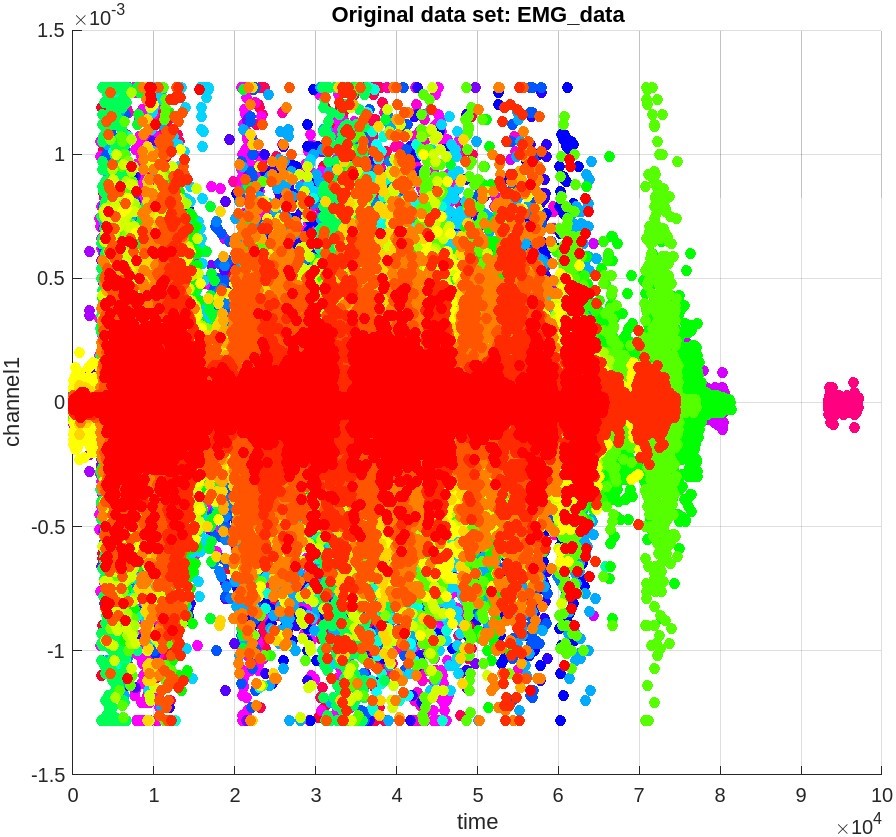Classification of Amputee EMG Signals Using Machine Learning Techniques
Keywords:
EMG, SVM, CNN, ANN, Feature ExtractionAbstract
In the field of prosthetics and assistive technology, the accurate classification of EMG signals from amputees is of paramount importance. These signals provide insights into the intended movements of the user and are essential for designing intuitive and responsive prosthetic devices. This research is primarily centered on the meticulous classification of EMG signals using advanced machine-learning techniques. This research contributes by achieving high accuracy (95.77%, 97.36%, and 95.77%) using SVM, ANN, and CNN, respectively, on EMG signals from 11 amputees in the Ninapro database, offering an innovative approach to improve amputee assistance. We employed SVM, ANN, and CNN algorithms to classify EMG signals from 11 amputees in the Ninapro database, utilizing a robust methodology. This research yielded impressive accuracy rates of 95.77%, 97.36%, and 95.77% for SVM, ANN, and CNN, respectively, demonstrating the effectiveness of machine-learning techniques in amputee EMG signal classification. The discussion highlights the potential implications for improving prosthetic control and rehabilitation. This research presents promising results and highlights the potential of machine learning for advancing amputee assistance, opening new avenues for research and application.
References
T. Ahmed and M. K. Islam, “EMG Signal Classification for Detecting Neuromuscular Disorders,” J. Phys. Conf. Ser., vol. 1921, no. 1, p. 012043, May 2021, doi: 10.1088/1742-6596/1921/1/012043.
R. J. Oweis, R. Rihani, and A. Alkhawaja, “ANN-based EMG classification for myoelectric control,” Int. J. Med. Eng. Inform., vol. 6, no. 4, pp. 365–380, Oct. 2014, doi: 10.1504/IJMEI.2014.065442.
K. BAKIRCIOĞLU and N. ÖZKURT, “Classification of Emg Signals Using Convolution Neural Network,” Int. J. Appl. Math. Electron. Comput., vol. 8, no. 4, pp. 115–119, Dec. 2020, doi: 10.18100/IJAMEC.795227.
H. Basak, A. Roy, J. B. Lahiri, S. Bose, and S. Patra, “SVM and ANN based Classification of EMG signals by using PCA and LDA,” Oct. 2021, Accessed: Oct. 09, 2023. [Online]. Available: https://arxiv.org/abs/2110.15279v1
J. Wu, X. Li, W. Liu, and Z. Jane Wang, “sEMG Signal Processing Methods: A Review,” J. Phys. Conf. Ser., vol. 1237, no. 3, p. 032008, Jun. 2019, doi: 10.1088/1742-6596/1237/3/032008.
M. Jafarzadeh, D. C. Hussey, and Y. Tadesse, “Deep learning approach to control of prosthetic hands with electromyography signals,” 2019 22nd IEEE Int. Symp. Meas. Control Robot. Robot. Benefit Humanit. ISMCR 2019, Sep. 2019, doi: 10.1109/ISMCR47492.2019.8955725.
N. S. Rekhi, A. S. Arora, S. Singh, and D. Singh, “Multi-class SVM classification of surface EMG signal for upper limb function,” 3rd Int. Conf. Bioinforma. Biomed. Eng. iCBBE 2009, 2009, doi: 10.1109/ICBBE.2009.5163093.
M. R. Ahsan, M. I. Ibrahimy, and O. O. Khalifa, “The use of artificial neural network in the classification of EMG signals,” Proc. - 2012 3rd FTRA Int. Conf. Mobile, Ubiquitous, Intell. Comput. Music 2012, pp. 225–229, 2012, doi: 10.1109/MUSIC.2012.46.
E. Scheme and K. Englehart, “Electromyogram pattern recognition for control of powered upper-limb prostheses: state of the art and challenges for clinical use,” J. Rehabil. Res. Dev., vol. 48, no. 6, pp. 643–660, 2011, doi: 10.1682/JRRD.2010.09.0177.
D. Tinoco-Varela, J. A. Ferrer-Varela, R. D. Cruz-Morales, and E. A. Padilla-García, “Design and Implementation of a Prosthesis System Controlled by Electromyographic Signals Means, Characterized with Artificial Neural Networks,” Micromachines 2022, Vol. 13, Page 1681, vol. 13, no. 10, p. 1681, Oct. 2022, doi: 10.3390/MI13101681.
M. Atzori, H. Muller, and M. Baechler, “Recognition of hand movements in a trans-radial amputated subject by sEMG,” IEEE Int. Conf. Rehabil. Robot., 2013, doi: 10.1109/ICORR.2013.6650486.
C. Spiewak, “A Comprehensive Study on EMG Feature Extraction and Classifiers,” Open Access J. Biomed. Eng. Biosci., vol. 1, no. 1, Feb. 2018, doi: 10.32474/OAJBEB.2018.01.000104.
B. Crawford, K. Miller, P. Shenoy, and R. P. N. Rao, “Real-Time Classification of Electromyographic Signals for Robotic Control,” 2005.
A. B. Y. Wan Mohd Bukhari Wan Daud and Rubita Sudirman, “Features Extraction of Electromyography Signals in Time Domain on Biceps Brachii Muscle.” http://www.ijmo.org/papers/332-X003.pdf (accessed Oct. 09, 2023).
Y. Wu, X. Hu, Z. Wang, J. Wen, J. Kan, and W. Li, “Exploration of Feature Extraction Methods and Dimension for sEMG Signal Classification,” Appl. Sci. 2019, Vol. 9, Page 5343, vol. 9, no. 24, p. 5343, Dec. 2019, doi: 10.3390/APP9245343.
A. Haiter Lenin, S. Mary Vasanthi, and T. Jayasree, “Automated Recognition of Hand Grasps Using Electromyography Signal Based on LWT and DTCWT of Wavelet Energy,” Int. J. Comput. Intell. Syst., vol. 13, no. 1, pp. 1027–1035, Jul. 2020, doi: 10.2991/IJCIS.D.200724.001.
S. Abbaspour, M. Lindén, H. Gholamhosseini, A. Naber, and M. Ortiz-Catalan, “Evaluation of surface EMG-based recognition algorithms for decoding hand movements,” Med. Biol. Eng. Comput., vol. 58, no. 1, pp. 83–100, Jan. 2020, doi: 10.1007/S11517-019-02073-Z/TABLES/9.
P. Randhawa, A. Patel, and U. Dasari, “A Machine Learning based Approach for Classification of a Person’s Actions based on Electromyography (EMG) Signals,” Proc. 2022 9th Int. Conf. Comput. Sustain. Glob. Dev. INDIACom 2022, pp. 802–807, 2022, doi: 10.23919/INDIACOM54597.2022.9763143.
I. Elamvazuthi, N. H. X. Duy, Z. Ali, S. W. Su, M. K. A. A. Khan, and S. Parasuraman, “Electromyography (EMG) based Classification of Neuromuscular Disorders using Multi-Layer Perceptron,” Procedia Comput. Sci., vol. 76, pp. 223–228, Jan. 2015, doi: 10.1016/J.PROCS.2015.12.346.
A. Ullah, S. Ali, I. Khan, M. A. Khan, and S. Faizullah, “Effect of analysis window and feature selection on classification of hand movements using EMG signal,” Adv. Intell. Syst. Comput., vol. 1252 AISC, pp. 400–415, 2021, doi: 10.1007/978-3-030-55190-2_30/COVER.
M. F. Y. Zulkifli and N. M. Nasir, “Classification of Electromyography Signal of Diabetes using Artificial Neural Networks,” Int. J. Adv. Comput. Sci. Appl., vol. 13, no. 11, pp. 433–438, 2022, doi: 10.14569/IJACSA.2022.0131149.

Published
How to Cite
Issue
Section
License
Copyright (c) 2023 50SEA

This work is licensed under a Creative Commons Attribution 4.0 International License.




















